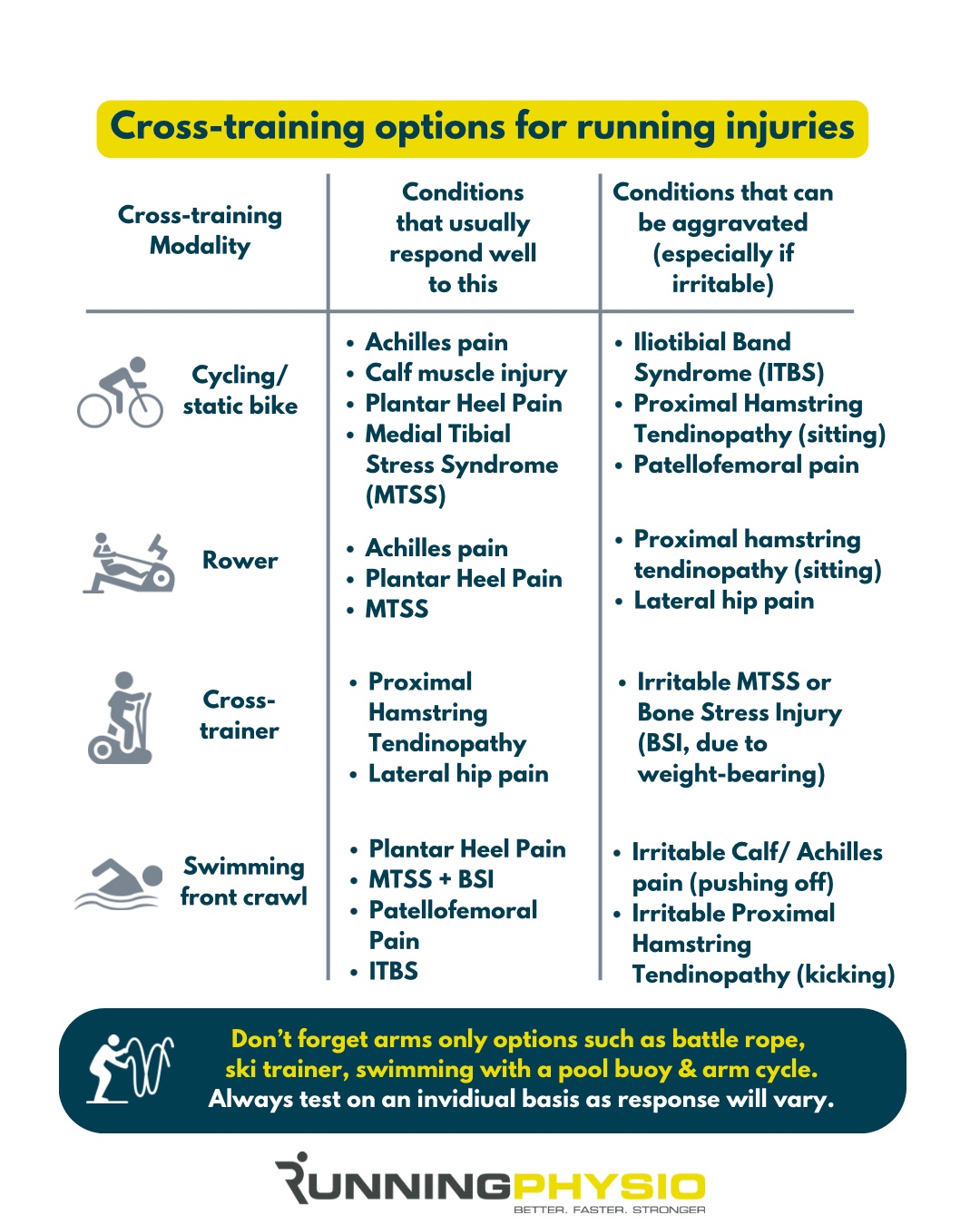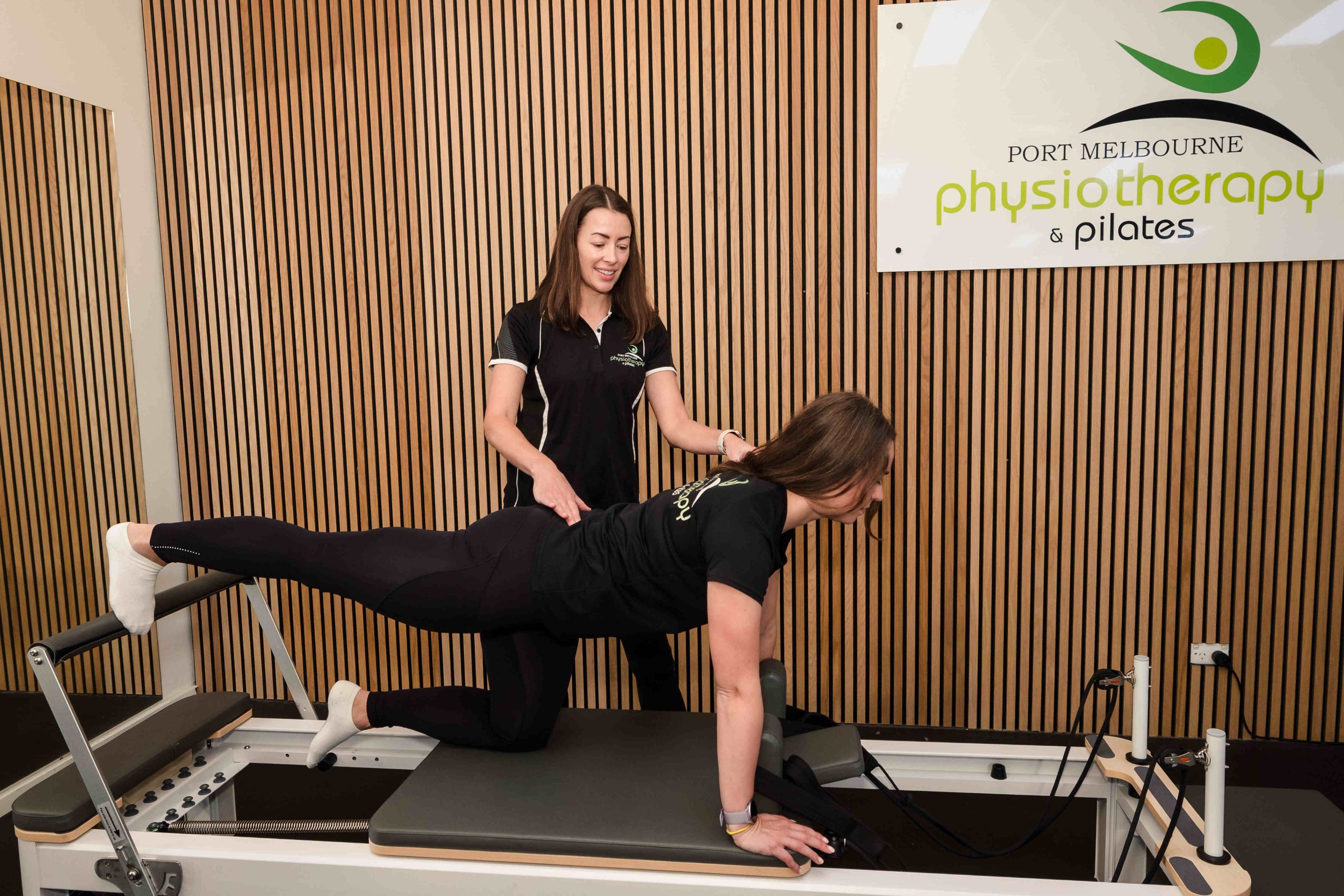Our articles are not designed to replace medical advice. If you have an injury we recommend seeing a qualified health professional. For more information please see our Terms and Conditions.
One of the training concepts we talk about on Running Repairs is risk versus reward.
Risk of aggravating symptoms or making an injury worse versus the reward of the mental and physical benefits that come from training.
Cross-training is a great way to reduce risk and maximise reward!
An athlete can still gain many of the benefits but can often find a training option that will load the tissues in a much more comfortable way.
If you use our ‘TEAMS’ approach it can help you optimise the benefits of cross-training for runners in your care:
This can be integrated into the return to running process. Hegedus et al. (2021) describe this in detail with a 6 phase approach that starts by replacing all running with cross-training and gradually reintroduces it through the phases:
It’s important to reason through which cross-training modalities may be best for an injured runner. Here are some suggestions for which options tend to work well for certain injuries and which can aggravate. These are just general recommendations though so it’s key to test on an individual basis.
As we touched upon in our TEAMS approach above there can be times when we don’t recommend cross-training such as when symptoms are too irritable or when we are concerned about Low Energy Availability (LEA).
It may be necessary to calm symptoms first or ensure energy needs are met before starting cross-training. That way the athlete can enjoy the rewards while minimising any risks.











